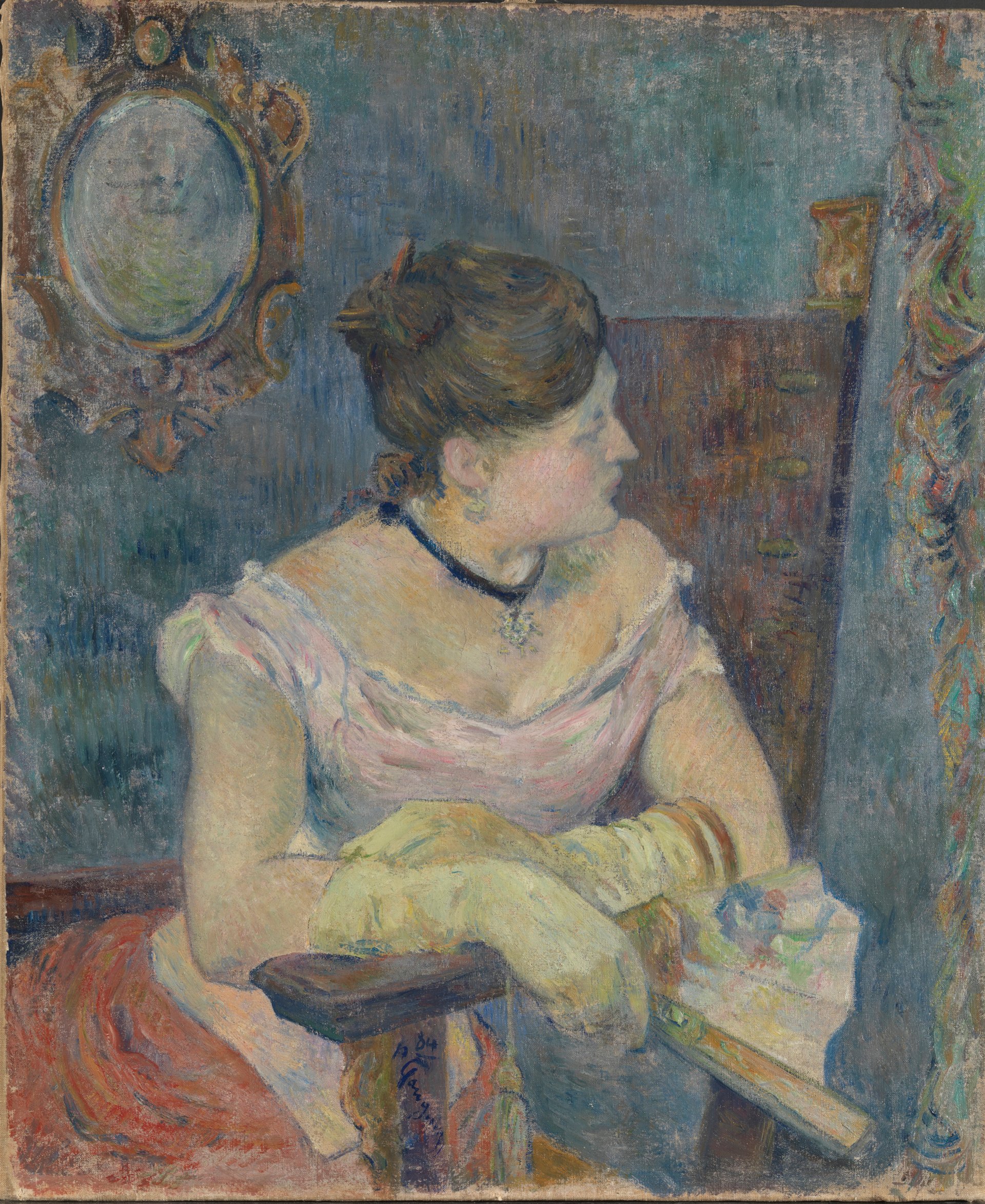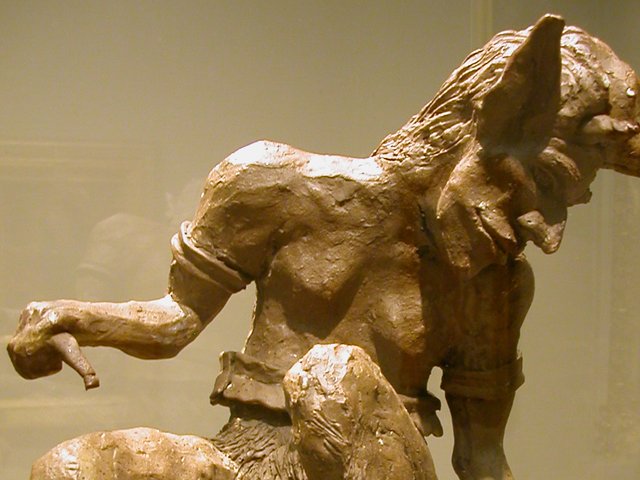An extraordinary brooch made by Paul Gauguin for his wife Mette has gone on display at the Ny Carlsberg Glyptotek in Copenhagen. The Art Newspaper is presenting the first photograph of this bizarre creation—crafted from a piece of stovepipe scrap metal, a glass watch-dial case and a lock of hair. Arguably, this piece of jewellery is among the earliest “readymades” in art history. (Gauguin later incorporated found objects in some of his sculptures.)
According to family tradition, Gauguin made the brooch for his Danish wife Mette Gad, whom he met in Paris in November 1872. They courted for a year and then married, at a time when he was working as a stockbroker. Gauguin was good with his hands and later carved wood sculptures and made ceramics in highly imaginative and unconventional ways, but until now there has been nothing to suggest that he created jewellery. Although there is no firm proof that the brooch was made by Gauguin, the Ny Carlsberg Glyptotek is exhibiting it as such, citing “a family legend” on the label. It is dated to the early 1870s.
Gauguin flattened the stovepipe metal and then cut it into a sun design (it would originally have been a shiny silvery colour but is now very tarnished). The points of the sun are jagged, giving a striking but slightly sinister impression. Gauguin took a dial glass from an old watch and fixed it to the centre. Inside this he added a thick lock of hair. Family tradition has that it is Mette’s hair, although it might have been Gauguin’s; it has since faded to cream.

Mette is depicted wearing the brooch or possibly a very similar one—there are minor differences—in an 1884 Gauguin portrait which is now at the National Gallery in Oslo. Wearing evening dress, the brooch hangs prominently from her neck on a thick, dark blue cord, set against her pink flesh. A studio photograph of Mette and Paul taken the following year shows her wearing what appears to be the same brooch. This suggests that it may have been a prized object for special occasions.
In 1884, Paul and Mette had moved to Copenhagen, with the artist trying to earn his living as a salesman for a tarpaulin company. This proved unsuccessful and at a time when Gauguin was turning to painting the couple drifted apart, although they remained married. A year later, soon after the photograph was taken, Gauguin left Mette, returning to Paris with their young son Clovis. Paul last saw Mette in 1891 and they later broke off contact. Gauguin died on the Polynesian island of Hiva Oa in 1903.
The Ny Carlsberg Glyptotek, which has one of the world’s finest Gauguin collections (along with the Musée d’Orsay in Paris), says that the brooch was inherited by one of the artist’s three surviving sons (Emile, Jean and Paul) after Mette’s death in 1920. It was given by a descendant in 1985 to a Danish collector with a special interest in the artist. It remains with his family. The brooch is on loan for the exhibition Gauguin’s Worlds, which runs until 28 August.


